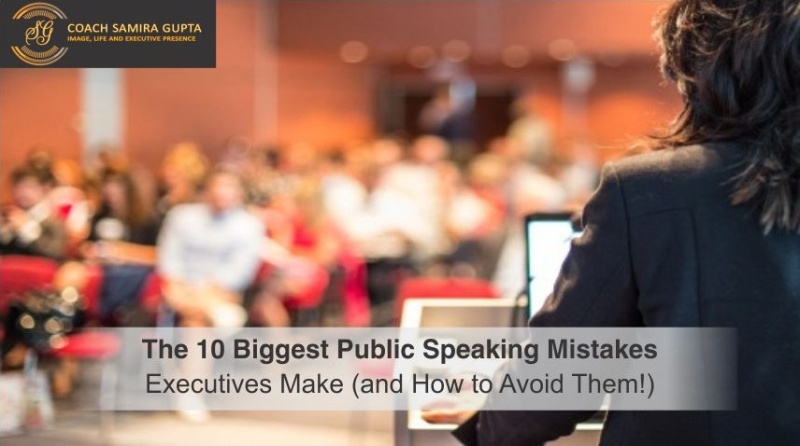The 10 Biggest Public Speaking Mistakes Executives Make (and How to Avoid Them!)

November 17, 2023
Public speaking is a skill that can make or break an executive's career. The ability to communicate effectively in front of an audience is a critical component of executive presence, leadership, and influence. However, even the most seasoned executives can stumble when they step onto the stage. In this blog, we'll explore the ten biggest public speaking mistakes executives make and provide you with actionable strategies on how to avoid them. Whether you're a seasoned speaker or a novice, these insights will help you improve your public speaking skills and leave a lasting impact.
Mistake 1: Neglecting Preparation
One of the most common mistakes executives make is underestimating the importance of thorough preparation. Executives often rely on their experience and expertise, assuming they can "wing it." This approach can lead to a lack of structure, coherence, and credibility in their speeches.
Solution:
Invest time in researching your topic, organizing your thoughts, and practicing your delivery. Rehearsing helps build confidence and ensures a polished performance.Mistake 2: Ignoring the Audience
Some executives focus too much on what they want to say and forget to consider their audience's needs and interests. This can result in disengagement and a missed opportunity to connect.
Solution:
Tailor your message to your audience's expectations, concerns, and knowledge. Address their pain points, and make your content relevant to them.
Mistake 3: Overloading with Information
Executives often feel the urge to share every detail and data point related to their topic. This can overwhelm the audience and dilute the core message.
Solution:
Prioritize key points and present them concisely. Less can be more when it comes to delivering a memorable speech.
Mistake 4: Lack of Clear Structure
A disorganized speech can confuse and alienate your audience. Many executives fail to create a logical flow, making it difficult for listeners to follow their message.
Solution:
Create a clear structure with a strong opening, well-defined main points, and a compelling conclusion. Use signposts to guide your audience through your presentation.
Mistake 5: Neglecting Nonverbal Communication
Your body language, gestures, and eye contact play a significant role in how your message is received. Many executives unintentionally send negative signals through their nonverbal cues.
Solution:
Practice positive body language, maintain eye contact, and use gestures purposefully to reinforce your message.
Mistake 6: Rushing Through the Speech
Speaking too quickly is a common mistake, often due to nerves or the desire to finish quickly. Rapid speech can make it hard for the audience to absorb your content.
Solution:
Slow down and enunciate clearly. Pause to allow your audience to digest key points.
Mistake 7: Lack of Vocal Variety
Monotone delivery can lull your audience to sleep. Some executives fail to use vocal variety to emphasize key points and maintain engagement.
Solution:
Practice modulation in your voice. Vary your tone, pitch, and pace to keep your audience engaged.
Mistake 8: Neglecting Visual Aids
Visual aids, such as slides, can enhance your presentation, but overloading them with text or relying on them too heavily is a mistake.
Solution:
Use visual aids sparingly and make them visually appealing. They should support, not replace, your spoken words.
Mistake 9: Fear of Silence
Executives often fear silence and fill it with filler words like "um" and "uh." This can undermine your credibility.
Solution:
Embrace the power of silence. Pauses can add impact to your message and make you appear more composed.
Mistake 10: Failing to Engage Emotionally
Finally, many executives forget to connect with their audience on an emotional level. A speech that lacks emotional appeal can leave listeners cold.
Solution:
Inject stories, anecdotes, and relatable examples to connect with your audience's emotions. Show your passion and authenticity.
In conclusion, avoiding these ten common public speaking mistakes can elevate your executive presence and enhance your ability to influence and inspire your audience. Remember that public speaking is a skill that can be continually improved with practice and self-awareness. So, the next time you step onto the stage, make sure you're well-prepared, audience-focused, and aware of the potential pitfalls to deliver a compelling and memorable presentation that leaves a lasting impact on your listeners.
Hiring a coach can significantly help your journey to becoming an impactful public speaker. Get in touch with Coach Samira Gupta to learn the nuances of ‘how to become a great public speaker’.
You may contact her at +91 9958934766 or email her at samira@auraaimage.com